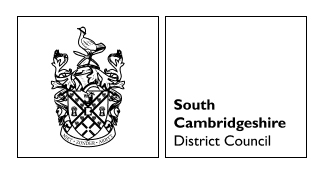- South Cambridgeshire Council adopted a Low-code, agile approach to enhance customer interaction and service accessibility through a single platform
- £22k pa saved by building an in-house Complaints System
- >57, 000 online stakeholder accounts set up, with 50% of them being set up outside office hours
Building online services to serve a rural population
Accessing local government services online is becoming increasingly popular with residents. It’s often the first place people will look for information and is often the channel of choice to contact their council. For some time now, people have been opting to interact online, meaning digital services are much more in demand now.
With that in mind, our team at South Cambridgeshire wanted to stay in step with the needs and expectations of residents while doing our best for the council financially.
A changing landscape
As an area, South Cambridgeshire is very rural. We have some growing new towns, along with around 100 communities of varying sizes that surround Cambridge itself. As a council, Government funding cuts means we’re continuously trying to innovate on a tight budget and do more with less. This is made more challenging with the increasing expectation that services are available at all hours and populated with the most up-to-date information possible.
The evolving landscape led us to push forward with our drive to transform the way our online services are run, and how citizens engage with them. Through a low-code, agile approach, we have leveraged digital services to improve customer interaction and engagement, personalised these services, and provided easy access to information through a single platform.
A system with many moving parts
For this project, we were keen to build on the great relationship with one of our existing delivery partners to make the process as seamless and cost effective as possible. We’ve worked with IEG4 since 2017 and as the technology developed, we too have developed. Initially implementing significant numbers of online forms before building outwards to a portal for residents which currently has 57,197 customer accounts registered, and then utilising their Workflow and Case Management system.
As part of our continuous work, we’re currently looking into integrating and automating these eforms into a business portal to complement the residents’ portal, and further improvements to our processes in general.
When customers come into the online portal, they’re able to access real-time information on everything from their council tax to benefits. They can see details of payments, direct debits, and payment history. That payment history is important for those who might not have paid all of their council tax in the previous financial year and need visibility of it rolling over into the new year.
With benefits, customers can see a pie-chart breakdown of the distribution of funds and access information on how their benefits have been calculated.
The portal also functions with live updates so the likelihood of people being stuck on phonelines waiting for updates has been greatly reduced.
Enhancing Customer Portal Experience
Giving communities the benefit
All of the functionality the portal provides will contribute to customers feeling empowered and in control of this part of their lives.
The system combined with our ambitious future plans, may sound like we’re trying to spin plates, but each element has flowed easily from one to the next. The benefits that our local communities have felt have been incredible to see and offer us the motivation to continue developing at speed. Almost 50% of sign-ups to our customer portal have happened outside office hours, confirming that there was a significant need for a 24/7 self-service system to be in place. People work, have families, responsibilities and busy lives in general – and the option to access services at a more convenient time is invaluable. We always need to remember that behind the number of sign-ups is a group of people whose lives will be made easier.
Overcoming challenges
We have learned a lot of useful lessons throughout our journey, and it has required a real understanding of the business processes, and being able to take everything apart and build it back up again. For example, with our current work on online service forms, we have 236 basic forms, almost 50 integrated and automated forms that put data into a back-office system and either require a manual touchpoint or, in the case of the automated forms have minimal or no human touch. Of those 50 forms, 16 utilise IEG4’s intuitive Workflow and Case Management solution.
And it was this solution that enabled me to respond to an internal request to build an in-house Complaints system instead of buying one, and thereby saving the council £22k per year. As part of that build, a new form was created and added to the Workflow, incorporating 11 branches to mirror the number of options to complain about within the form. As a result, we now have a Complaints System that gives us more visibility and rich data on our complaints; something we didn’t have before.
Having the right tools and working with the right delivery partner has been instrumental in making those significant changes to our service delivery. The benefits have been seen across the whole council, with lead cabinet member, Cllr Brian Milnes, advising “As a progressive Local Authority it is important that we are continuously improving our services and making them as accessible as possible. 24×7 digital access to those services is increasingly an expectation of our residents, and why we have made great strides in providing those services directly via our web site. Using existing and new tools (from IEG4) we have ensured that these developments have been implemented in a very cost-effective way. We look forward to continuing this project making contact with the Council easier, quicker and from when and wherever residents choose”.
How South Cambridgeshire Council Enhanced Service Delivery:
Digital maturity
Developing online services so that everything is data-driven, prevents problems before they become issues, should be part of the natural evolution of local government. It’s essential to have a robust system that can deal with everything from requests to complaints and provide a single view of information for every kind of user.
We are pleased to have undertaken this journey, chosen the right delivery partner, and transformed our services to better serve the local community amidst a huge increase in demand for online provision. Taking these important steps towards digital maturity has future-proofed our services for years to come.











